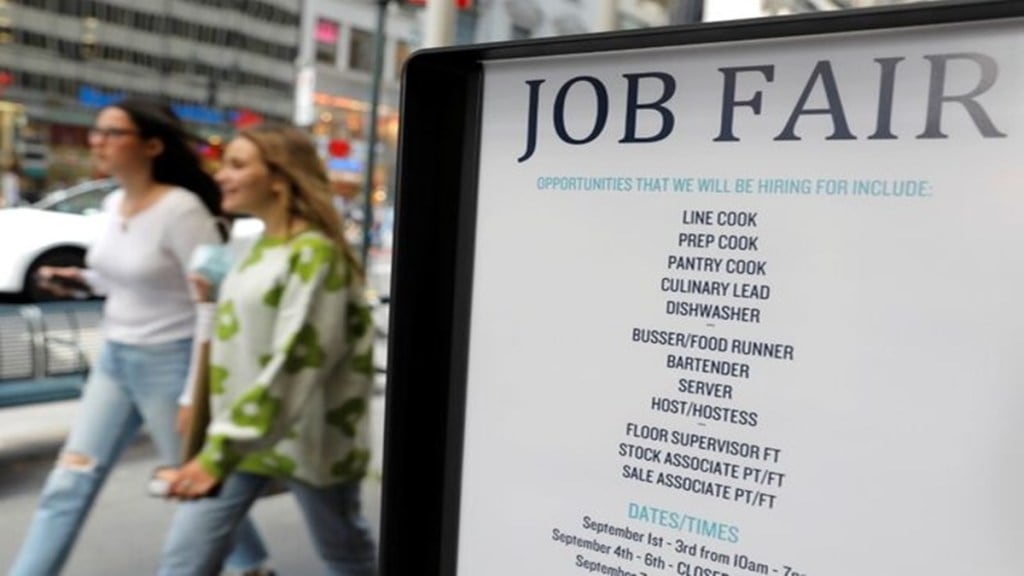By TV Mohandas Pai and Nisha Holla
India has undergone transformative progress over the past decade under the National Democratic Alliance government, addressing two significant challenges. First, the nation has seen the largest development surge in its history, providing essential amenities such as housing, water, and electricity. Second, extensive infrastructure has been built to connect the country’s diverse regions. As the world’s fastest-growing large economy, India must focus on creating high-quality jobs for its burgeoning workforce, particularly in its heartland.
Economic growth and employment trends
India’s nominal gross domestic product (GDP) has grown from Rs 113.5 trillion in FY14 to an estimated Rs 324.1 trillion in FY25, achieving a remarkable 10% compound annual growth rate and a cumulative growth of 185% over 11 years. This economic expansion has been accompanied by a rise in formal employment, as evidenced by data from the Employees’ Provident Fund (EPF) and Employees State Insurance (ESI) systems. These reliable databases, linked to Aadhaar, track actual contributions, reflecting genuine job creation.
Despite challenges posed by the pandemic, EPF and ESI subscriptions have rebounded strongly. In FY24 alone, the EPF recorded 1.64 crore new subscribers after 1.38 crore in FY22 and 1.58 crore in FY23. Already in FY25, from April to October, 1.1 crore new subscribers have been recorded. The ESI recorded 1.67 crore new enrollments in FY24 following 1.49 crore in FY22 and 1.67 crore in FY23. While there is considerable overlap between the two databases, these trends indicate robust employment generation.
Data also indicates genuine employment creation rather than mere formalisation. For instance, 56,023 establishments began contributing to the EPF for the first time in FY24, formalising 11.2 lakh jobs, while the remaining 1.53 crore represent new job creation. Additionally, over 48-50% of new jobs are filled by individuals aged 18-25 years across the two databases, further highlighting genuine opportunities for young workers. It is unlikely that such a high proportion of young individuals would be accounted for if these were merely existing jobs being formalised.
However, challenges remain. Many jobs pay less than Rs 20,000 per month, and a significant portion of the workforce transitioning from agriculture to industry and services requires skilling, upskilling, and access to local opportunities. Encouragingly, women’s participation in the workforce has increased substantially, rising from 23.3% in 2017-18 to 37% in 2022-23, driven largely by self-employment and the growth of self-help groups under the Deendayal Antyodaya Yojana-National Rural Livelihoods Mission. Creating suitable local employment remains crucial to sustaining this trend.
The case for SEZs
The upcoming Budget 2025-26 offers a unique opportunity to address these challenges and capitalise on recent successes. Establishing special employment zones (SEZs) could serve as a transformative strategy to create five crore jobs over five years in India’s heartlands. These zones would:
Provide employer incentives: Employers would receive grants of `2,000 per month per new employee for the first 24 months, along with coverage of EPFO and ESI contributions. These incentives would help offset training costs and productivity gaps during the initial phase.
Promote labour-intensive jobs: Significant investments would establish industry clusters in 400 backward districts and 1,000 tier-II/III/IV towns, strategically located near surplus-labour markets. The government can promote labour-intensive industries in these SEZs to maximise employment generation and skilling possibilities. Numerous labour markets are moving away from China due to the increase in labour and living costs there. Establishing industries that cater to these markets will create tremendous opportunities in India.
Encourage women’s workforce participation: By providing local employment opportunities and integrating the Kaushal scheme for skill development, SEZs could address commuting and relocation challenges faced by women, further boosting their participation.
Offer tax incentives: Businesses registering in SEZs would benefit from tax deductions, encouraging long-term investment and sustainable growth.
Realising the vision
Achieving this ambitious goal requires substantial budgetary allocation in 2025-26 and sustained investments in subsequent years. This funding would drive the creation of globally competitive clusters; foster complementary urbanisation to support industrial hubs; and enhance workforce skilling and ensure fair wages, verified through EPF or ESI contributions.
The establishment of SEZs would represent a visionary step toward creating five crore new jobs and empowering India’s heartlands. With a robust framework of incentives, infrastructure, and skilling, these zones could transform India’s heartlands into growth engines, enabling backward districts to outpace state growth averages. By addressing employment challenges strategically, India can unlock the aspirations of its workforce and ensure inclusive economic progress.
The writers are respectively chairman and research fellow, 3one4 Capital.
Disclaimer: Views expressed are personal and do not reflect the official position or policy of FinancialExpress.com. Reproducing this content without permission is prohibited.
